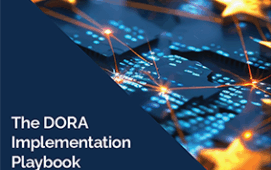A third of the 50 hedge funds involved in a recent survey commissioned by Omgeo and conducted by Greenwich Associates have invested in improving their valuations and accounting systems, with many more focused on reducing counterparty risk. The fallout from the financial crisis and the intense regulatory and client scrutiny of the hedge funds market has inspired these funds and their managers to invest in their technology infrastructures to improve their risk management and transparency, according to the survey.
A desire to restore trust and confidence in the hedge fund sector, along with the desire to keep the regulatory community off their backs, seem to have combined to compel these firms to invest in new technology, particularly around risk management and pricing. Key areas for investment by these North American, European and Asian funds are around automating reconciliation, cash management, collateral management and pricing, says the vendor.
The majority of respondents, at 70%, have altered their operations to reduce counterparty risk and 40% of the managers have taken steps to enhance reporting and increase transparency for investors, according to the survey results. More than two thirds of the hedge funds participating in the survey believe operational improvements and automation have a direct and positive impact on their ability to attract investors and assets.
“Better routines and work practices have helped us provide transparency to our clients, which gives investors additional confidence in us,” said one North American respondent.
Matthew Nelson, director of market intelligence at Omgeo, reckons this is proof of a growing trend within the hedge fund sector: “This study highlights something we’ve been hearing for some time from our own hedge fund clients: today it is absolutely critical for hedge funds to understand their counterparty risk exposure, as this knowledge is imperative to a funds’ ability to attract capital. It is encouraging to see so many hedge fund managers in this day and age recognising how closely operations and counterparty risk are aligned and that such measures are being taken to improve automation in the post-trade world.”
The Omgeo survey certainly corroborates a trend identified by a survey published earlier in the year by investment management solution vendor SEI (also conducted with Greenwich Associates). The survey, which included discussions with institutional investors investing in hedge funds, also indicates that hedge fund managers are being compelled to institutionalise their responses to transparency demands from clients and regulators. More than 70% of institutional investor respondents reported requesting more detailed information from managers than they did a year earlier: proof that pressure is coming from clients as much as it is from regulators.
Data transparency is evidently a key issue across the market and nowhere more so than areas such as valuation methodology and counterparty risk exposure. Both surveys suggest that hedge funds are being forced to invest in their data architectures and data feeds in order to meet these new requirements, much the same as the rest of the market. A-Team Group has noted this trend over recent years in terms of the wider market, as firms adopt a more creative approach to data workflow by adding in more automation and by dual sourcing pricing data.
Subscribe to our newsletter




